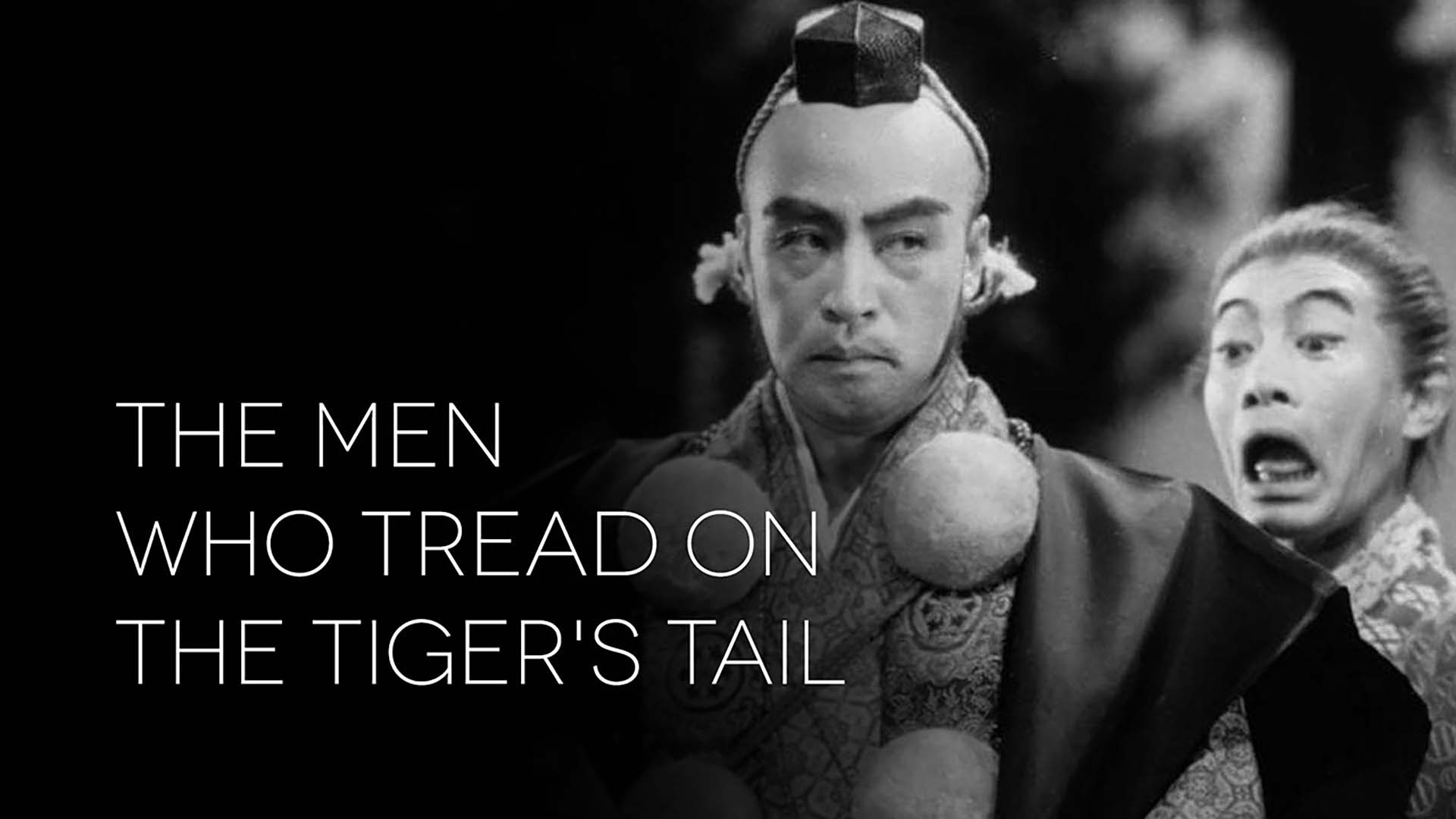
“The Men Who Tread on the Tiger’s Tail” is a classic movie that has captivated audiences for decades. Directed by the legendary filmmaker Akira Kurosawa, this film is a masterpiece that weaves an intricate tale of honor, deception, and loyalty in feudal Japan. With its compelling story, brilliant performances, and timeless cinematography, “The Men Who Tread on the Tiger’s Tail” continues to remain a favorite among movie enthusiasts around the world.In this article, we will delve into 48 fascinating facts about this iconic film, shedding light on its production, behind-the-scenes stories, and impact on the cinematic landscape. Whether you’re a die-hard fan or a casual moviegoer, get ready to discover interesting tidbits about the making of “The Men Who Tread on the Tiger’s Tail.” So grab some popcorn and get ready to dive into the captivating world of this cinematic gem that has stood the test of time.
Key Takeaways:
- “The Men Who Tread on the Tiger’s Tail” is a classic Japanese film by Akira Kurosawa, banned during World War II but later celebrated for its powerful storytelling and visual style.
- The movie’s survival against censorship and its impact on cinema history showcase Kurosawa’s genius and the timeless relevance of its themes of loyalty and honor.
The Men Who Tread on the Tiger’s Tail is a Japanese film directed by Akira Kurosawa.
Released in 1945, it is set in feudal Japan during the 12th century and is based on a historical event from the 13th century.
The movie was inspired by the traditional Noh and Kabuki theatres.
Director Akira Kurosawa wanted to capture the essence of these traditional art forms in his film.
The Men Who Tread on the Tiger’s Tail was adapted from a kabuki play called “Ataka.”
Kurosawa reimagined the play for the screen, adding his own unique touches to the story.
The film was made during World War II.
Due to the war, the production faced challenges such as limited resources and strict censorship.
The Men Who Tread on the Tiger’s Tail was banned by the Japanese military government.
The authorities believed that the film could potentially demoralize the Japanese soldiers.
Despite the ban, the film was privately screened and garnered critical acclaim.
It later gained international recognition for its artistic and storytelling prowess.
The Men Who Tread on the Tiger’s Tail marks one of Kurosawa’s earliest collaborations with actor Toshiro Mifune.
Mifune went on to become one of the most iconic actors in Japanese cinema history.
The movie explores themes of loyalty, honor, and deception.
It delves into the psychological and moral struggles faced by the characters in their quest to protect their master.
The Men Who Tread on the Tiger’s Tail showcases Kurosawa’s signature visual style.
With its well-crafted compositions and dynamic camera movements, the film highlights Kurosawa’s mastery of cinematic storytelling.
The movie’s title is a metaphorical representation of the characters’ daring journey.
It symbolizes their courage and determination in the face of adversity.
The Men Who Tread on the Tiger’s Tail was shot in black and white.
This artistic choice adds to the film’s atmospheric and dramatic effect.
The movie’s runtime is approximately 60 minutes.
Despite its relatively short duration, it manages to deliver a compelling narrative.
The Men Who Tread on the Tiger’s Tail is considered a precursor to Kurosawa’s later masterpieces like “Rashomon” and “Seven Samurai.”
The film showcases Kurosawa’s evolving storytelling techniques and thematic depth.
The dialogue in the film is highly stylized.
It emphasizes the traditional theatrical influences while adding a distinct cinematic touch.
The Men Who Tread on the Tiger’s Tail received a posthumous release for its banned scenes.
After the war, the censored footage was restored, and the complete version of the film was made available to the public.
The movie’s score was composed by Akira Ifukube.
Ifukube’s music adds depth to the film’s emotional impact and captures the essence of the story.
The Men Who Tread on the Tiger’s Tail showcases the clash between samurai honor and the deception required to outsmart the enemy.
This conflict drives the plot and raises moral questions about sacrifice and loyalty.
The film’s production design incorporates traditional Japanese aesthetics.
From the costumes to the sets, every aspect of the film reflects the rich cultural heritage of Japan.
The Men Who Tread on the Tiger’s Tail was originally intended as propaganda but evolved into a poetic and thought-provoking piece.
Kurosawa’s vision elevated the film beyond its initial purpose, creating a timeless cinematic experience.
The movie’s release was delayed multiple times due to political and economic factors.
However, its eventual release marked a significant milestone in Kurosawa’s career.
The Men Who Tread on the Tiger’s Tail showcases the director’s talent for building tension through suspenseful sequences.
Each scene keeps the audience on the edge of their seats, wondering what will happen next.
The film’s success paved the way for Kurosawa’s future collaborations with Toshiro Mifune.
Their partnership resulted in numerous iconic films that left a lasting impact on cinema.
The Men Who Tread on the Tiger’s Tail is an example of how art can triumph over adversity.
The film’s survival against censorship and its subsequent recognition highlight its cultural and historical significance.
The movie explores the complexities of human nature and the lengths individuals will go to protect those they serve.
This theme resonates with audiences across cultures and time periods.
The Men Who Tread on the Tiger’s Tail is a testament to Kurosawa’s ability to tell compelling stories under challenging circumstances.
His determination and resilience shine through in every frame of the film.
The movie’s narrative structure follows a linear progression, allowing for a focused and engaging storytelling experience.
The plot unfolds seamlessly, capturing the audience’s attention from start to finish.
The Men Who Tread on the Tiger’s Tail is a celebration of the art of filmmaking.
It showcases the power of cinema to transport audiences to different eras and immerse them in compelling narratives.
The film’s dialogue is rich with symbolism and metaphors.
Every line of dialogue contributes to the overall thematic depth of the story.
The Men Who Tread on the Tiger’s Tail is hailed as a classic of Japanese cinema.
Its influence can be seen in subsequent films and the works of other renowned directors.
The movie’s cinematography captures the beauty of Japanese landscapes and the intricacies of the characters’ emotions.
Each frame is composed with precision, creating stunning visual compositions.
The Men Who Tread on the Tiger’s Tail showcases the director’s ability to create compelling character dynamics.
Each character has a distinct personality and contributes to the overall narrative in a meaningful way.
The film’s themes resonate with universal human experiences, transcending cultural and historical boundaries.
It explores concepts of loyalty, sacrifice, and honor that are deeply relatable to audiences worldwide.
The Men Who Tread on the Tiger’s Tail received critical acclaim upon its release for its innovative storytelling and strong performances.
It quickly established Kurosawa’s reputation as a visionary filmmaker.
The movie’s screenplay presents a balanced mix of action, drama, and suspense.
Each element contributes to the overall narrative flow, keeping the audience engaged throughout.
The Men Who Tread on the Tiger’s Tail showcases Kurosawa’s fascination with the human condition and the complex choices individuals face.
The film raises philosophical questions that resonate with viewers long after the credits roll.
The movie’s success paved the way for Kurosawa’s exploration of more ambitious projects in the future.
It served as a stepping stone for his later cinematic achievements.
The Men Who Tread on the Tiger’s Tail features strong performances by the ensemble cast.
Each actor brings depth and nuance to their respective roles, making the characters come alive on screen.
The film’s narrative follows a group of disguised warriors attempting to cross enemy lines.
Their journey is fraught with danger and suspense as they navigate through treacherous territory.
The Men Who Tread on the Tiger’s Tail showcases Kurosawa’s meticulous attention to detail in capturing the historical period.
Every aspect of the film, from the costumes to the set design, reflects extensive research and dedication.
The movie’s pacing allows for a gradual build-up of tension, leading to a climactic finale.
Each scene unfolds at the perfect pace, keeping the audience engaged and invested in the story.
The Men Who Tread on the Tiger’s Tail is an example of Kurosawa’s mastery of both visual and narrative storytelling.
His ability to create captivating visuals while maintaining a compelling narrative sets him apart as a filmmaker.
The film’s success led to an increased interest in Japanese cinema worldwide.
It helped to introduce international audiences to the rich cultural heritage of Japan.
The Men Who Tread on the Tiger’s Tail showcases the director’s ability to create suspenseful and emotionally charged sequences.
Every scene is crafted with precision, heightening the impact of the story.
The movie’s ending leaves open interpretation, allowing the audience to reflect on the characters’ choices and the consequences of their actions.
This ambiguity adds depth to the film and invites discussion among viewers.
The Men Who Tread on the Tiger’s Tail received numerous accolades and awards, cementing its status as a cinematic masterpiece.
It is recognized for its artistic merit and groundbreaking storytelling techniques.
The film’s impact continues to inspire filmmakers and storytellers to this day.
Kurosawa’s contribution to cinema is felt in the works of subsequent generations of filmmakers.
The Men Who Tread on the Tiger’s Tail is a testament to the power of storytelling to transcend time and cultural boundaries.
It remains relevant and captivating, even decades after its initial release.
The movie’s legacy is a testament to the vision and genius of director Akira Kurosawa.
The Men Who Tread on the Tiger’s Tail solidified his place as one of the most influential filmmakers in history.
Conclusion
In conclusion, The Men Who Tread on the Tiger’s Tail is a cinematic masterpiece that deserves recognition for its historical significance and captivating storytelling. Directed by the renowned filmmaker Akira Kurosawa, the movie beautifully depicts the moral dilemmas faced by its characters and explores themes of honor, loyalty, and the delicate balance between deception and truth. With its engaging plot, outstanding performances, and stunning cinematography, The Men Who Tread on the Tiger’s Tail remains an influential film that continues to inspire and entertain audiences today.
FAQs
1. Who directed The Men Who Tread on the Tiger’s Tail?
Akira Kurosawa, one of the most acclaimed directors in the history of cinema, directed The Men Who Tread on the Tiger’s Tail.
2. What is the movie about?
The Men Who Tread on the Tiger’s Tail tells the story of a group of samurais disguised as monks as they attempt to navigate a territory controlled by an enemy warlord during feudal Japan.
3. When was the movie released?
The Men Who Tread on the Tiger’s Tail was released in Japan on August 23, 1945.
4. Is the movie based on a true story?
Yes, the movie is based on a traditional Japanese play called “Kanjincho,” which is itself based on a real incident from the 12th century.
5. What is the significance of the movie’s title?
The title “The Men Who Tread on the Tiger’s Tail” is a metaphor for the characters’ daring journey through dangerous territory, facing immense risks and challenges.
6. Are there any notable awards or nominations for the movie?
Due to its release at the end of World War II, The Men Who Tread on the Tiger’s Tail did not receive immediate recognition or distribution. However, it later gained critical acclaim and is now regarded as a seminal work in Japanese cinema.
7. Can I watch the movie online?
Yes, The Men Who Tread on the Tiger’s Tail is available on various streaming platforms and can be purchased or rented from online marketplaces.
8. Does the movie have English subtitles?
Yes, English subtitles are available for The Men Who Tread on the Tiger’s Tail, allowing non-Japanese-speaking viewers to enjoy the film’s brilliance.
9. Is there a remake or adaptation of the movie?
No, The Men Who Tread on the Tiger’s Tail has not been remade or adapted into another film, preserving its originality and artistic integrity.
10. Is The Men Who Tread on the Tiger’s Tail recommended for movie enthusiasts?
Absolutely! The Men Who Tread on the Tiger’s Tail is a must-watch for anyone who appreciates timeless cinema, rich storytelling, and masterful filmmaking.
Was this page helpful?
Our commitment to delivering trustworthy and engaging content is at the heart of what we do. Each fact on our site is contributed by real users like you, bringing a wealth of diverse insights and information. To ensure the highest standards of accuracy and reliability, our dedicated editors meticulously review each submission. This process guarantees that the facts we share are not only fascinating but also credible. Trust in our commitment to quality and authenticity as you explore and learn with us.


